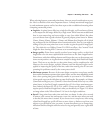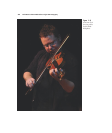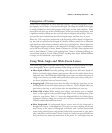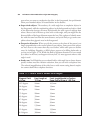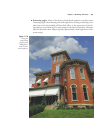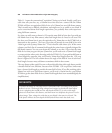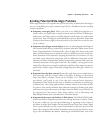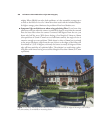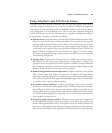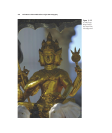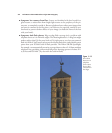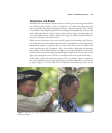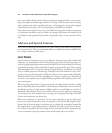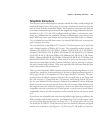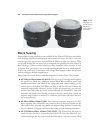
Using Telephoto and Tele-Zoom Lenses
Telephoto lenses also can have a dramatic effect on your photography, and Nikon is
especially strong in the long-lens arena, with lots of choices in many focal lengths and
zoom ranges. You should be able to find an affordable telephoto or tele-zoom to enhance
your photography in several different ways. Here are the most important things you
need to know. In the next section, I’ll concentrate on telephoto considerations that can
be problematic—and how to avoid those problems.
■ Selective focus. Long lenses have reduced depth-of-field within the frame, allow-
ing you to use selective focus to isolate your subject. You can open the lens up wide
to create shallow depth-of-field, or close it down a bit to allow more to be in focus.
The flip side of the coin is that when you want to make a range of objects sharp,
you’ll need to use a smaller f/stop to get the depth-of-field you need. Like fire, the
depth-of-field of a telephoto lens can be friend or foe. Figure 11.12 shows a photo
of a statue, photographed using a telephoto lens and wider f/stop to de-emphasize
the distracting background.
■ Getting closer. Telephoto lenses bring you closer to wildlife, sports action, and can-
did subjects. No one wants to get a reputation as a surreptitious or “sneaky” pho-
tographer (except for paparazzi), but when applied to candids in an open and honest
way, a long lens can help you capture memorable moments while retaining enough
distance to stay out of the way of events as they transpire.
■ Reduced foreground/increased compression. Telephoto lenses have the opposite
effect of wide angles: they reduce the importance of things in the foreground by
squeezing everything together. This compression even makes distant objects appear
to be closer to subjects in the foreground and middle ranges. You can use this effect
as a creative tool to squeeze subjects together.
■ Accentuates camera shakiness. Telephoto focal lengths hit you with a double-
whammy in terms of camera/photographer shake. The lenses themselves are bulkier,
more difficult to hold steady, and may even produce a barely perceptible see-saw
rocking effect when you support them with one hand halfway down the lens bar-
rel. Telephotos also magnify any camera shake. It’s no wonder that vibration reduc-
tion is popular in longer lenses.
■ Interesting angles require creativity. Telephoto lenses require more imagination
in selecting interesting angles, because the “angle” you do get on your subjects is so
narrow. Moving from side to side or a bit higher or lower can make a dramatic dif-
ference in a wide-angle shot, but raising or lowering a telephoto lens a few feet prob-
ably will have little effect on the appearance of the distant subjects you’re shooting.
Chapter 11 ■ Working with Lenses 369



